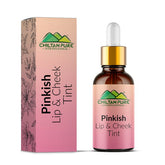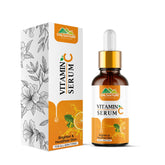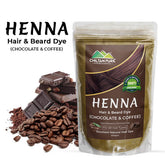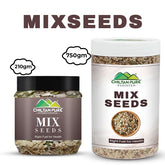Glycolic acid is an AHA, or Alpha Hydroxy Acid. It's a water-soluble acid and an ingredient that increases luminosity of the skin because it exfoliates the outermost dead layer of the skin, which is called the Stratum Corneum. It improves the reflection of light on the skin. Sometimes people use scrubs, which are abrasive and can cause irritation, but unlike scrubs, when Glycolic acid is used at the right percentage and when done appropriately, it's a much gentler way to exfoliate the skin.
Product name: Glycolic acid
CAS #: 79-14-1
EC#: 201-180-5
FORMULA: HOCH2COOH
Molecular weight: 76.05
Physical state: white crystals
Melting Point: 75-79 C
pH: 1.7-2.5
 Structure of Glycolic Acid
Structure of Glycolic Acid
Glycolic Acid in Skin Care:
 Glycolic acid is a colorless, odorless alpha-hydroxy-acid (AHA) derived from sugarcane. It’s a type of chemical exfoliant that dissolves the bonds between dead skin cells, allowing them to be wiped away easily, revealing smooth, younger skin below.
Benefits:
Glycolic acid is a colorless, odorless alpha-hydroxy-acid (AHA) derived from sugarcane. It’s a type of chemical exfoliant that dissolves the bonds between dead skin cells, allowing them to be wiped away easily, revealing smooth, younger skin below.
Benefits:
 When applied to the skin, glycolic acid works to break the bonds between the outer layer of skin cells, including dead skin cells, and the next skin cell layer. This creates a peeling effect that can make the skin appear smoother and more even.
For people with acne, the benefit of glycolic acid is that the peeling effects results in less “gunk” that clogs the pores. This includes dead skin cells and oil. With less to clog the pores, the skin clears and you usually have fewer breakouts.
Also, glycolic acid can affect the outer skin barrier, helping it retain moisture instead of drying your skin out. This is an advantage for acne-prone people because many other topical anti-acne agents, like salicylic acid and benzoyl peroxide, are drying.
Research has found that glycolic acid has antibacterial and antioxidant activity, which can also help improve your skin’s appearance when you have acne. Glycolic acid can also thicken skin by stimulating collagen growth.
How to use it:
Glycolic acid is available in several forms, including over-the-counter and prescription treatments. These include:
When applied to the skin, glycolic acid works to break the bonds between the outer layer of skin cells, including dead skin cells, and the next skin cell layer. This creates a peeling effect that can make the skin appear smoother and more even.
For people with acne, the benefit of glycolic acid is that the peeling effects results in less “gunk” that clogs the pores. This includes dead skin cells and oil. With less to clog the pores, the skin clears and you usually have fewer breakouts.
Also, glycolic acid can affect the outer skin barrier, helping it retain moisture instead of drying your skin out. This is an advantage for acne-prone people because many other topical anti-acne agents, like salicylic acid and benzoyl peroxide, are drying.
Research has found that glycolic acid has antibacterial and antioxidant activity, which can also help improve your skin’s appearance when you have acne. Glycolic acid can also thicken skin by stimulating collagen growth.
How to use it:
Glycolic acid is available in several forms, including over-the-counter and prescription treatments. These include:
 A few things to remember. First, glycolic acid is an example of chemical exfoliation. While it’s not as fast as a scrub, the acid can penetrate more deeply and produce greater exfoliation over time. All this is to say — you likely won’t need to exfoliate with scrubs while also using glycolic acid. Your face may feel too sensitive otherwise.
Speaking of sensitive, you also don’t need to use multiple glycolic acid-containing products. Consistent use of one product with occasional spot treatments is often enough to keep your skin clear. Sometimes, your dermatologist may recommend a stronger, in-office peel, but this isn’t always the case.
Side effects:
Glycolic acid isn’t for everyone. Some people have reactions to glycolic acid that can include symptoms such as swelling, itching, and burning sensations. Those with dry or sensitive skin types may find glycolic acid is too irritating for their skin.
In addition to these concerns, some people find they are more sensitive to sun when they use glycolic acid. Using a daily sunscreen can help reduce the sun exposure risks.
Cautions:
If you have a darker skin tone, talk to your dermatologist about glycolic acids and its best uses for you. Most people can use glycolic acid effectively, but sometimes the acid can irritate darker skin tones and cause post-inflammatory hyperpigmentation or dark spots. Using lower concentrations and refraining from using too many glycolic acid-containing products can often reduce this risk.
The depth to which glycolic acid causes peeling often depends upon the concentration. For example, a 1 percent glycolic acid solution affects the pH level of three layers of skin, while a 10 percent solution can penetrate 10 to 20 layers, according to Research.
This isn’t to say more is better (it’s not). Lower percentages can be less irritating and therefore more skin-friendly. You may find topical preparations that range from 1 percent up to 10 percent (usually reserved for spot treatments or a rinse-off peel only).
There are sources on the internet that sell higher percentages of glycolic acid, sometimes as much as 30 or 40 percent. These are medical grade peels, and you shouldn’t use them without a dermatologist oversight. A dermatologist knows how long the peel should stay on and if it’s right for your skin in the first place.
Summary:
A few things to remember. First, glycolic acid is an example of chemical exfoliation. While it’s not as fast as a scrub, the acid can penetrate more deeply and produce greater exfoliation over time. All this is to say — you likely won’t need to exfoliate with scrubs while also using glycolic acid. Your face may feel too sensitive otherwise.
Speaking of sensitive, you also don’t need to use multiple glycolic acid-containing products. Consistent use of one product with occasional spot treatments is often enough to keep your skin clear. Sometimes, your dermatologist may recommend a stronger, in-office peel, but this isn’t always the case.
Side effects:
Glycolic acid isn’t for everyone. Some people have reactions to glycolic acid that can include symptoms such as swelling, itching, and burning sensations. Those with dry or sensitive skin types may find glycolic acid is too irritating for their skin.
In addition to these concerns, some people find they are more sensitive to sun when they use glycolic acid. Using a daily sunscreen can help reduce the sun exposure risks.
Cautions:
If you have a darker skin tone, talk to your dermatologist about glycolic acids and its best uses for you. Most people can use glycolic acid effectively, but sometimes the acid can irritate darker skin tones and cause post-inflammatory hyperpigmentation or dark spots. Using lower concentrations and refraining from using too many glycolic acid-containing products can often reduce this risk.
The depth to which glycolic acid causes peeling often depends upon the concentration. For example, a 1 percent glycolic acid solution affects the pH level of three layers of skin, while a 10 percent solution can penetrate 10 to 20 layers, according to Research.
This isn’t to say more is better (it’s not). Lower percentages can be less irritating and therefore more skin-friendly. You may find topical preparations that range from 1 percent up to 10 percent (usually reserved for spot treatments or a rinse-off peel only).
There are sources on the internet that sell higher percentages of glycolic acid, sometimes as much as 30 or 40 percent. These are medical grade peels, and you shouldn’t use them without a dermatologist oversight. A dermatologist knows how long the peel should stay on and if it’s right for your skin in the first place.
Summary:
 Glycolic acid is a multitasking skincare ingredient that can help you fight acne and improve your skin’s appearance. Due to concerns for irritation, it’s best to talk to your dermatologist before you start using it. Starting with lower percentage formulations can help your skin adjust and reduce irritation risks over time.
Glycolic acid is a multitasking skincare ingredient that can help you fight acne and improve your skin’s appearance. Due to concerns for irritation, it’s best to talk to your dermatologist before you start using it. Starting with lower percentage formulations can help your skin adjust and reduce irritation risks over time.
 Structure of Glycolic Acid
Structure of Glycolic Acid
| Glycolic acid Usage And Synthesis | |
| Description | Glycolic acid is the smallest alpha-hydroxy acid (AHA). It is mainly supplemented to various skin-care products to improve the skin’s appearance and texture. It can also reduce wrinkles, acne scarring, and hyperpigmentation. In textile industry, it can be used as a dyeing and tanning agent. It can also be used as a flavoring agent in food processing, and as a skin care agent in the pharmaceutical industry. It can also be added into emulsion polymers, solvents and ink additives to improve flow properties and impart gloss. Moreover, it is a useful intermediate for organic synthesis including oxidative-reduction, esterification and long chain polymerization. |
| Chemical Properties | Glycolic acid, CH20HCOOH, also known as hydroxyacetic acid, is composed of colorless deliquescent leaflets that decompose at approximately 78° C (172 OF). It is soluble in water, alcohol & other. Glycolic acid is used in dyeing, tanning, electropolishing and in foodstuffs. It is produced by oxidizing glycol with dilute nitric acid. |
| Uses | Constituent of sugar cane juice. |
| Uses | In the processing of textiles, leather, and metals; in pH control, and wherever a cheap organic acid is needed, e.g. in the manufacture of adhesives, in copper brightening, decontamination cleaning, dyeing, electroplating, in pickling, cleaning and chemical milling of metals. |
| Uses | glycolic acid (hydroxyacetic acid) reduces corenocyte cohesion and corneum layer thickening where an excess buildup of dead skin cells can be associated with many common skin problems, such as acne, dry and severely dry skin, and wrinkles. glycolic acid acts by dissolving the internal cellular cement responsible for abnormal keratinization, facilitating the sloughing of dead skin cells. It also improves skin hydration by enhancing moisture uptake as well as increasing the skin’s ability to bind water. This occurs in the cellular cement through an activation of glycolic acid and the skin’s own hyaluronic acid content. Hyaluronic acid is known to retain an impressive amount of moisture and this capacity is enhanced by glycolic acid. As a result, the skin’s own ability to raise its moisture content is increased. glycolic acid is the simplest alpha hydroxyacid (AHA). It is also the AHA that scientists and formulators believe has greater penetration potential largely due to its smaller molecular weight. It is mildly irritating to the skin and mucous membranes if the formulation contains a high glycolic acid concentration and/ or a low pH. Glycolic acid proves beneficial for acne-prone skin as it helps keep pores clear of excess keratinocytes. It is also used for diminishing the signs of age spots, as well as actinic keratosis. However, glycolic acid is most popularly employed in anti-aging cosmetics because of its hydrating, moisturizing, and skin-normalizing abilities, leading to a reduction in the appearance of fine lines and wrinkles. Regardless of the G skin type, glycolic acid use is associated with softer, smoother, healthier, and younger looking skin. glycolic acid is naturally found in sugarcane but synthetic versions are most often used in cosmetic formulations. |
 Glycolic acid is a colorless, odorless alpha-hydroxy-acid (AHA) derived from sugarcane. It’s a type of chemical exfoliant that dissolves the bonds between dead skin cells, allowing them to be wiped away easily, revealing smooth, younger skin below.
Benefits:
Glycolic acid is a colorless, odorless alpha-hydroxy-acid (AHA) derived from sugarcane. It’s a type of chemical exfoliant that dissolves the bonds between dead skin cells, allowing them to be wiped away easily, revealing smooth, younger skin below.
Benefits:
 When applied to the skin, glycolic acid works to break the bonds between the outer layer of skin cells, including dead skin cells, and the next skin cell layer. This creates a peeling effect that can make the skin appear smoother and more even.
For people with acne, the benefit of glycolic acid is that the peeling effects results in less “gunk” that clogs the pores. This includes dead skin cells and oil. With less to clog the pores, the skin clears and you usually have fewer breakouts.
Also, glycolic acid can affect the outer skin barrier, helping it retain moisture instead of drying your skin out. This is an advantage for acne-prone people because many other topical anti-acne agents, like salicylic acid and benzoyl peroxide, are drying.
Research has found that glycolic acid has antibacterial and antioxidant activity, which can also help improve your skin’s appearance when you have acne. Glycolic acid can also thicken skin by stimulating collagen growth.
How to use it:
Glycolic acid is available in several forms, including over-the-counter and prescription treatments. These include:
When applied to the skin, glycolic acid works to break the bonds between the outer layer of skin cells, including dead skin cells, and the next skin cell layer. This creates a peeling effect that can make the skin appear smoother and more even.
For people with acne, the benefit of glycolic acid is that the peeling effects results in less “gunk” that clogs the pores. This includes dead skin cells and oil. With less to clog the pores, the skin clears and you usually have fewer breakouts.
Also, glycolic acid can affect the outer skin barrier, helping it retain moisture instead of drying your skin out. This is an advantage for acne-prone people because many other topical anti-acne agents, like salicylic acid and benzoyl peroxide, are drying.
Research has found that glycolic acid has antibacterial and antioxidant activity, which can also help improve your skin’s appearance when you have acne. Glycolic acid can also thicken skin by stimulating collagen growth.
How to use it:
Glycolic acid is available in several forms, including over-the-counter and prescription treatments. These include:
- face washes
- lotions
- peels
- serums
- skin care pads
 A few things to remember. First, glycolic acid is an example of chemical exfoliation. While it’s not as fast as a scrub, the acid can penetrate more deeply and produce greater exfoliation over time. All this is to say — you likely won’t need to exfoliate with scrubs while also using glycolic acid. Your face may feel too sensitive otherwise.
Speaking of sensitive, you also don’t need to use multiple glycolic acid-containing products. Consistent use of one product with occasional spot treatments is often enough to keep your skin clear. Sometimes, your dermatologist may recommend a stronger, in-office peel, but this isn’t always the case.
Side effects:
Glycolic acid isn’t for everyone. Some people have reactions to glycolic acid that can include symptoms such as swelling, itching, and burning sensations. Those with dry or sensitive skin types may find glycolic acid is too irritating for their skin.
In addition to these concerns, some people find they are more sensitive to sun when they use glycolic acid. Using a daily sunscreen can help reduce the sun exposure risks.
Cautions:
If you have a darker skin tone, talk to your dermatologist about glycolic acids and its best uses for you. Most people can use glycolic acid effectively, but sometimes the acid can irritate darker skin tones and cause post-inflammatory hyperpigmentation or dark spots. Using lower concentrations and refraining from using too many glycolic acid-containing products can often reduce this risk.
The depth to which glycolic acid causes peeling often depends upon the concentration. For example, a 1 percent glycolic acid solution affects the pH level of three layers of skin, while a 10 percent solution can penetrate 10 to 20 layers, according to Research.
This isn’t to say more is better (it’s not). Lower percentages can be less irritating and therefore more skin-friendly. You may find topical preparations that range from 1 percent up to 10 percent (usually reserved for spot treatments or a rinse-off peel only).
There are sources on the internet that sell higher percentages of glycolic acid, sometimes as much as 30 or 40 percent. These are medical grade peels, and you shouldn’t use them without a dermatologist oversight. A dermatologist knows how long the peel should stay on and if it’s right for your skin in the first place.
Summary:
A few things to remember. First, glycolic acid is an example of chemical exfoliation. While it’s not as fast as a scrub, the acid can penetrate more deeply and produce greater exfoliation over time. All this is to say — you likely won’t need to exfoliate with scrubs while also using glycolic acid. Your face may feel too sensitive otherwise.
Speaking of sensitive, you also don’t need to use multiple glycolic acid-containing products. Consistent use of one product with occasional spot treatments is often enough to keep your skin clear. Sometimes, your dermatologist may recommend a stronger, in-office peel, but this isn’t always the case.
Side effects:
Glycolic acid isn’t for everyone. Some people have reactions to glycolic acid that can include symptoms such as swelling, itching, and burning sensations. Those with dry or sensitive skin types may find glycolic acid is too irritating for their skin.
In addition to these concerns, some people find they are more sensitive to sun when they use glycolic acid. Using a daily sunscreen can help reduce the sun exposure risks.
Cautions:
If you have a darker skin tone, talk to your dermatologist about glycolic acids and its best uses for you. Most people can use glycolic acid effectively, but sometimes the acid can irritate darker skin tones and cause post-inflammatory hyperpigmentation or dark spots. Using lower concentrations and refraining from using too many glycolic acid-containing products can often reduce this risk.
The depth to which glycolic acid causes peeling often depends upon the concentration. For example, a 1 percent glycolic acid solution affects the pH level of three layers of skin, while a 10 percent solution can penetrate 10 to 20 layers, according to Research.
This isn’t to say more is better (it’s not). Lower percentages can be less irritating and therefore more skin-friendly. You may find topical preparations that range from 1 percent up to 10 percent (usually reserved for spot treatments or a rinse-off peel only).
There are sources on the internet that sell higher percentages of glycolic acid, sometimes as much as 30 or 40 percent. These are medical grade peels, and you shouldn’t use them without a dermatologist oversight. A dermatologist knows how long the peel should stay on and if it’s right for your skin in the first place.
Summary:
 Glycolic acid is a multitasking skincare ingredient that can help you fight acne and improve your skin’s appearance. Due to concerns for irritation, it’s best to talk to your dermatologist before you start using it. Starting with lower percentage formulations can help your skin adjust and reduce irritation risks over time.
Glycolic acid is a multitasking skincare ingredient that can help you fight acne and improve your skin’s appearance. Due to concerns for irritation, it’s best to talk to your dermatologist before you start using it. Starting with lower percentage formulations can help your skin adjust and reduce irritation risks over time.
Tags:


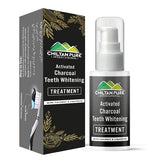

![Red Onion Oil 🧅 Reduces Hair Fall & Accelerates Hair Regrowth [پیاز کا تیل].. Trending.... 🔥 - ChiltanPure](http://chiltanpure.com/cdn/shop/products/red-onion-oil-reduces-hair-fall-amp-accelerates-hair-regrowth-piaz-ka-til-trending-394813_165x.jpg?v=1707464619)
![Red Onion Oil 🧅 Reduces Hair Fall & Accelerates Hair Regrowth [پیاز کا تیل].. Trending.... 🔥 - ChiltanPure](http://chiltanpure.com/cdn/shop/products/red-onion-oil-reduces-hair-fall-amp-accelerates-hair-regrowth-piaz-ka-til-trending-329640_165x.jpg?v=1708127491)


